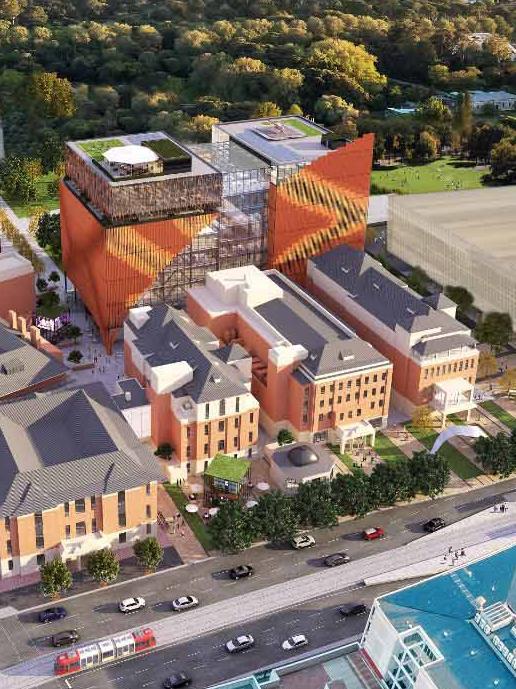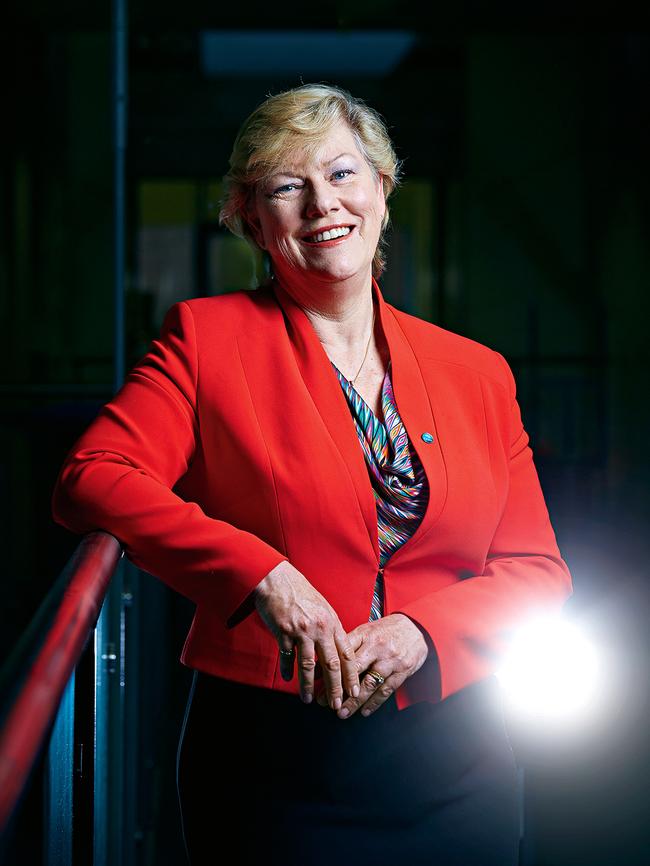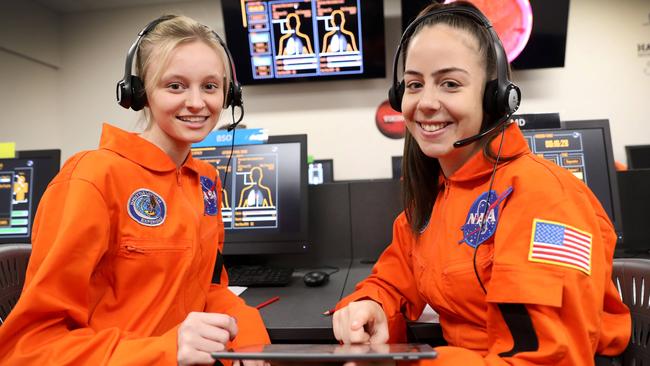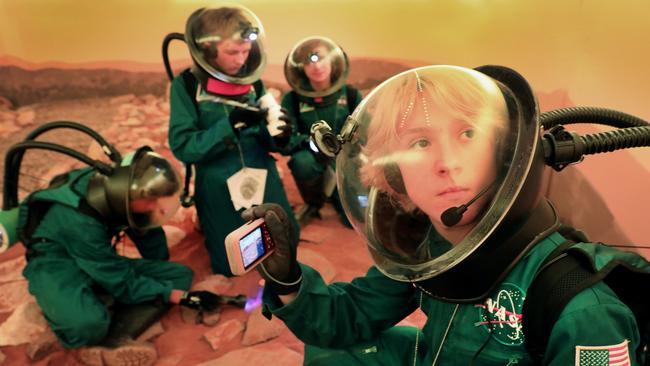Adelaide’s Australian Space Agency will remain here, Labor won’t overturn federal Government decision
Labor says it will not overturn the Federal Government’s decision to headquarter the Australian Space Agency in Adelaide — as our schools develop their own space courses in anticipation.
SA News
Don't miss out on the headlines from SA News. Followed categories will be added to My News.
- THE WIN: Adelaide secures national space agency
- THE LOCATION: City Deal to transform old RAH into space site
- EXPLAINER: So what is a City Deal anyway?
- REACTION: What readers think of Space Agency in Adelaide
Labor says it will not overturn the Federal Government’s decision to headquarter the Australian Space Agency in Adelaide.
In the wake of the Liberal Government’s announcement that Adelaide would be Space HQ, there was some concern Labor would stick to its policy of making Canberra the centre.
Labor is on track to win Government at an election in the first half of next year.
Industry spokesman Kim Carr said while they wouldn’t change the HQ, they still wanted to see all states and territories involved.
“Labor won’t be looking to overturn the Government’s decision,” he said.
“The best thing for Australia’s space industry is for the Government to now release a detailed plan so Australia can get on with the job.
“We will look at the details — in particular how all states and territories can play a role in contributing to this hugely important project.
“It is critical that there is a national approach to the work of the agency, in particular other research institutions and universities.”


The agency has been operating out of Canberra and apart from chief Dr Megan Clark the staff will not move to Adelaide immediately.
The former state Labor Government began the push for the agency, while Prime Minister Scott Morrison said it was Premier Steven Marshall’s enthusiasm that sealed the deal for Adelaide.
State Labor Leader Peter Malinauskas said he had spoken to his Federal colleagues and they had confirmed the agency would stay here.
“The former State Labor Government commenced this process last year and laid the foundations for success by establishing the SA Space Industry Centre and securing the International Astronautical Congress here in Adelaide,” he said.
The Australian Space Agency is proud to launch our new brand, one that serves our nation, honours our past and builds the future.https://t.co/AgdXGOxNFH pic.twitter.com/OEggh6HIlU
— Australian Space Agency (@AusSpaceAgency) December 12, 2018
But Opposition Leader Bill Shorten was less emphatic than Senator Carr.
“Well we certainly want to see jobs go to Adelaide and we are certainly very committed to a space agency,” he said.
“Therefore we will look at the evidence and if it is the right case to move jobs to Adelaide we certainly will.”
Space Minister Karen Andrews said Adelaide was the ideal base from which to drive a national agenda.
“South Australia has a large space industry including more than 60 organisations and over 800 employees,” she said.
This included defence contractors like Airbus, BAE Systems and Lockheed Martin, as well as scale-ups like Myriota which has developed world-class satellite Internet of Things technology and recently launched its first payload, she said.
She also pointed to Fleet Space Technologies, which has launched four cubesats tracked from its SA ground station.
The Canberra Government is angry the nation’s capital missed out, and WA more so.
Meanwhile a report, Satellite Communications and Astronautics in 2018-2019, found space will generate $5.1 billion in revenue this year, and that will grow to $7.2 billion over the next five years.
It’s a class full of Astro Girls

As hopes are pinned on the Australian Space Agency inspiring more girls into science careers, one Adelaide girls’ school is getting ahead of the game by designing its own astrophysics course.
Demand is high for Seymour College’s new semester-long Year 10 elective, which will be launched next year.
Senior school dean of teaching and learning Natalie Paelchen says the school’s own teachers with qualifications in the field have designed the course.
“We are looking at the future and we can see girls’ interest in space technology, so we want to highlight that and grow that,” she says.
“It has been very popular. We’ve got about 25 girls enrolled in the course for second semester.”
The course outline says it will cover:
Spacecraft design principles.
Viability of space exploration and colonisation.
Interpreting the night sky.
Detection of neutron stars and black holes.
Development of modern astronomy.
Students explaining their position in the universe and where human history fits into the time scale of the universe.
Ms Paelchen says the college will look into ways to take advantage of the Australian Space Agency being based in Adelaide.
“We would love to foster any kind of connection because we know that real life science learning really excites girls,” she says.
The course is part of a major curriculum overhaul at the Glen Osmond school.
The Advertiser has previously reported students will work independently online, away from their teachers, for half the lessons in some senior school subjects.
Most of the middle school curriculum has been merged into two interdisciplinary subjects.
Population explodes on ‘Mars’ colony

Living on Mars would be harsh and unforgiving, but hundreds of SA school kids can’t wait to go there.
Hamilton Secondary College’s $200,000 space centre, complete with Martian surface and mission control, opened a year ago but has had 700 visitors from other schools, on top of Hamilton’s own regular use.
Principal Peta Kourbelis says other schools have come in one day a week, but that was set to rise to three days a week next year even before the announcement that Adelaide would host the Australian Space Agency.
Now, she says, it could increase again to almost daily use, meaning a population explosion for the little Mars colony at the Mitchell Park campus. Brighton, Valley View and Henley high schools are among those to have already made repeat visits.
Premier Steven Marshall and Education Minister John Gardner visited the school yesterday.
“What we’re hoping is that it raises awareness for parents and students to understand what STEM is really about, what job opportunities are available, and that space is not just about being an astronaut,” Ms Kourbelis says.
Student Alana Sievers, 17, says the space agency coup “inspires us, knowing there’ll be jobs in the future”.


